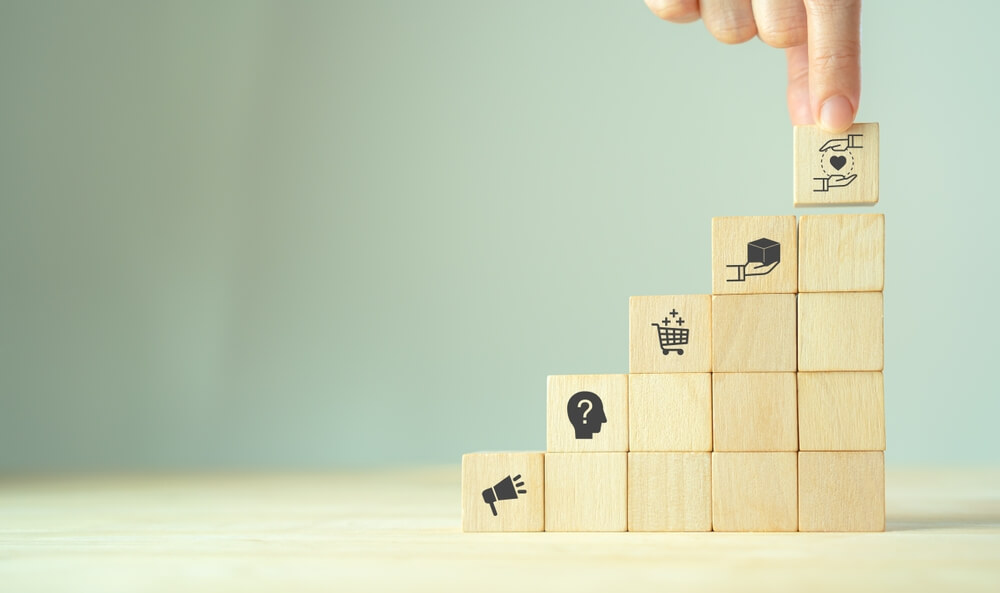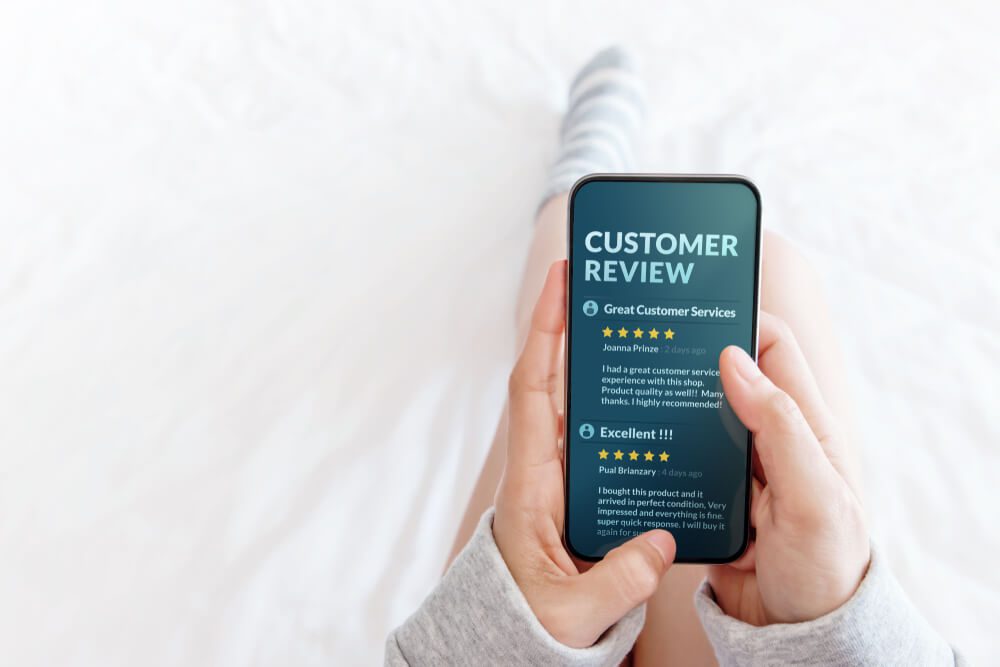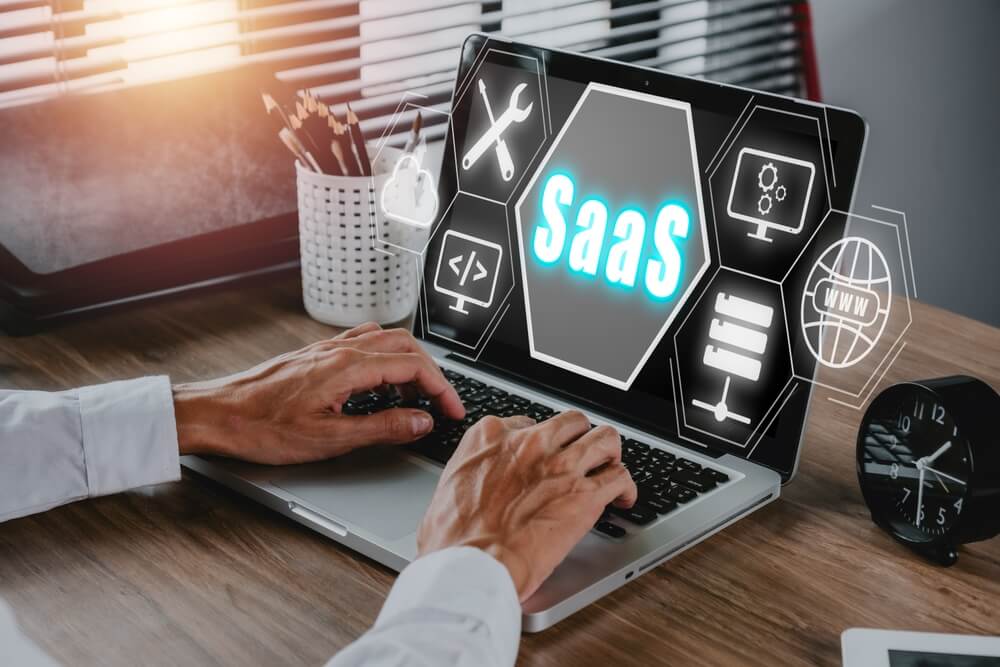
For Great Success, Know and Understand the SaaS Customers’ Path
Business marketing solutions improve when considering the customer's buying journey. Focusing on the buyer's journey in software-as-a-service (SaaS) allows firms to formulate strategies that guide their customers from awareness to advocacy.
Because SaaS is a digital product with ongoing, subscription-based use, its customer journey is unique. Unlike other industries' one-time purchases, a SaaS marketing agency focuses on onboarding, continuous engagement, and renewal or upselling. This guide covers the following SaaS customer paths:
- Awareness
- Consideration
- Decision
- Onboarding
- Usage and engagement
- Support and assistance
- Renewal or upselling
- Advocacy and loyalty
- Feedback loop
Learn about the challenges of SaaS marketing to further boost your software brand. Let’s go!
Want to know how we help SaaS businesses stand out from the crowd? Watch this video to learn how DAP makes it happen!
1. Awareness Stage
The awareness stage marks the initial phase of a potential customer's journey when they become aware of a SaaS product or service. Various marketing initiatives, such as content marketing, social media presence, word-of-mouth recommendations, and search engine optimization (SEO) techniques, typically trigger this stage.
SaaS companies can benefit from the awareness stage by improving brand visibility and attracting a broader audience. This is an excellent opportunity to create a favorable first impression, communicate their SaaS product's value proposition, and spark interest.
They use metrics such as website traffic, click-through rates, and social media engagement to track this stage and count the number of leads generated. Tools such as Google Analytics and marketing automation platforms also provide valuable insights into awareness-building strategies.
Monitoring the awareness stage helps SaaS companies refine their marketing strategies. They could identify the most successful channels and tailor their messaging to better resonate with the target audience.
2. Consideration Stage

The consideration stage is when potential customers actively evaluate and compare different SaaS solutions as they seek to address their specific needs or problems. During this stage, customers gather information to decide which SaaS product aligns best with their requirements.
Potential customers typically engage in in-depth research. They read reviews, compare feature sets, explore product demos, consult user forums, and seek advice from peers or industry experts.
SaaS companies need to provide valuable and relevant content through content marketing strategies. It helps to maximize consideration by considering comparison guides, case studies, and detailed product documentation. They also need webinars, live demos, and personalized consultations to demonstrate their product's capabilities.
Marketers monitor website engagement metrics, conversion rates for gated content (e.g., ebooks or whitepapers), and the number of demo requests or trial sign-ups. Analyzing customer feedback and understanding the reasons behind lost deals help SaaS companies fine-tune their offerings as well.
3. Decision Stage
The decision stage is pivotal in the customer's journey to adopt a particular SaaS solution. Potential customers have narrowed their options and focused on selecting the SaaS product that most aligns with their needs and budget.
Potential customers often interact directly with SaaS providers to get more information about their products. They might request personalized product demonstrations, speak with sales representatives, or try the software extensively to evaluate its suitability.
SaaS companies have to create a seamless transition from evaluation to adoption. They can offer clear pricing structures, straightforward onboarding processes, and exceptional customer support to instill confidence.
SaaS firms must monitor conversion rates from trial to paid customers, understand the reasons behind lost opportunities, and assess the effectiveness of sales and onboarding processes. Customer feedback and post-purchase surveys provide valuable insights for continuous improvement and optimization of this stage.
4. Onboarding Stage

The onboarding stage is critical when new customers begin setting up and using the SaaS product to which they have subscribed. This stage focuses on guiding users through the initial steps to ensure a positive first experience.
Customers usually rely on the SaaS company's resources, including tutorials, documentation, and help center articles. They also seek assistance through live chat or support channels.
SaaS companies should use strategies to reduce churn and increase retention rates. Effective onboarding makes sure that users quickly understand how to use the product and derive value to remain paying customers.
They monitor user engagement with onboarding materials and complete critical setup tasks. They use customer feedback to improve the onboarding process. Metrics, such as time to first value and user activation rates, are also valuable indicators of the success of the onboarding stage.
5. Usage and Engagement Stage
The usage and engagement stage defines the ongoing interaction between customers and the SaaS product. It focuses on making sure that customers actively use and engage with the software to derive value from it over time.
SaaS companies employ user behavior analytics and product usage metrics to monitor how customers navigate the platform. In addition, these show which features they utilize most and the frequency of their interactions.
Companies benefit from this stage by promoting user retention and satisfaction. Engaged and active customers are more likely to renew subscriptions and become advocates for the product. They can also upgrade to higher-tier plans.
Increased usage also provides valuable data for product improvement and feature development. Tracking this stage involves analyzing user metrics such as logins, feature adoption rates, time spent in the application, and customer feedback.
6. Support and Assistance Stage

The support and assistant stage involves providing ongoing customer support and assistance to address any questions, issues, or challenges that customers encounter while using the SaaS product. It aims to guarantee that customers have a positive and smooth experience and receive timely assistance when needed.
Information about this stage comes from customer support interactions, including helpdesk tickets, chat logs, email inquiries, and phone calls. Customer feedback, both positive and negative, is also a valuable source of information.
SaaS companies benefit from this stage by fostering customer loyalty and preventing churn. Effective support and assistance can turn potentially frustrated customers into satisfied, long-term users. It provides an opportunity to identify areas for product improvement based on customer feedback.
They monitor the support and assistance stage by measuring response times, issue resolution rates, and customer satisfaction scores from support interactions. Metrics, such as customer retention rates and the reduction of support ticket volumes, indicate the effectiveness of the support and assistance stage.
7. Renewal or Upsell Stage
The renewal or upsell stage involves approaching existing customers for subscription renewals or upgrades to higher-tier plans or more features. This is a crucial point in the customer journey where SaaS companies aim to retain and expand their customer base.
Information to improve this stage is through subscription data, usage metrics, and customer segmentation. Companies track customer behavior patterns and monitor which customers are approaching their renewal dates.
SaaS companies have to secure recurring revenue through subscription renewals and drive additional revenue through upsells. This stage allows them to maximize customer lifetime value and deepen their relationship with existing customers.
Tracking the renewal or upsell stage involves monitoring renewal rates, analyzing upsell conversion rates, and assessing the impact of retention strategies. Data from customer feedback, satisfaction, and the reasons behind renewals or upsells provide insights into optimizing this stage.
8. Advocacy and Loyalty Stage

The advocacy and loyalty stage is when satisfied customers advocate for the product or brand. They promote it to others and show long-term loyalty. This is when customers actively share positive feedback, refer others, and engage in activities contributing to brand advocacy.
SaaS companies gather information about the effectiveness of their advocacy and loyalty stages through email and other channels, including customer reviews, testimonials, referral programs, social media mentions, and online communities or forums. SaaS companies also track customer sentiment and net promoter score (NPS) to gauge advocacy and loyalty levels.
Loyal customers continue their subscriptions and help expand the customer base through word-of-mouth recommendations. These customers provide valuable insights and ideas for product improvement.
Tracking customer referrals, the success of referral programs, and social media mentions or reviews are critical during the advocacy and loyalty stage. Companies must assess growth in their user communities or forums and measure the impact of loyalty initiatives on customer retention and expansion efforts.
9. Feedback Loop Stage
The feedback loop involves gathering, analyzing, and acting upon customer feedback at various points in the customer journey. It is a systematic approach to understanding customer needs, preferences, and pain points to drive continuous improvement.
SaaS companies collect information through surveys, feedback forms, customer interviews, social media, and support interactions. They utilize feedback from user communities and product usage data to gain insights.
Companies enhance their products, services, and customer experience based on actionable insights from their customers. It helps them correct issues, find growth opportunities, and optimize marketing and customer success strategies.
Tracking the feedback loop stage involves measuring response rates to feedback requests and monitoring customer sentiment. It also includes assessing the impact of changes in response to feedback on customer satisfaction, retention, and growth metrics. The feedback loop stage is an iterative process to ensure continuous alignment with customer expectations and market needs.
Summing Up
The customer journey is not always linear. Customers might move back and forth between stages and their experiences might vary. Mapping this journey helps SaaS companies understand customer needs, tailor communication, and enhance user satisfaction.
Skip the endless hours of tracking and optimizing your SaaS marketing strategies. Have more time to focus on your business by working with the top SaaS marketing agency. Contact Digital Authority Partners (DAP) today.
Want To Meet Our Expert Team?
Book a meeting directly here




